Traditional software development is steady and deliberate. And that sounds like a positive thing until it results in delays and missed opportunities as you wait to launch your digital product. In contrast, Agile software development lifecycles are nimble and flexible, offering value with every iteration.
This guide explores Agile SDLC and its phases in more detail. We’ll compare it with traditional methodologies like Waterfall and offer an 8-step process to launch your own lifecycle. As a bonus, we’ll also explore how monday dev’s features are perfect for managing your Agile SDLC.
Try monday devWhat is Agile SDLC?
Agile software development life cycle, or Agile SDLC, exists to ensure customer satisfaction. To achieve this holy grail, Agile teams break a larger project down into smaller cycles or sprints, then collaborate on each one. Every iteration produces something of value to place into the world before receiving stakeholder or user feedback. You repeat this process with each sprint, which typically lasts between two and four weeks.
For example, in the first sprint, the development team may focus on creating a basic user interface and product mock-up, then they’ll add further core functionality in the second, third and fourth sprints. Each sprint provides space for stakeholders to give feedback and request changes throughout the process.
The key differences between traditional SDLC and Agile
To see how Agile compares to a traditional model, we’ve compared the key differences between Agile and Waterfall SDLC at a glance:
| Waterfall SDLC | Agile SDLC |
|---|---|
| Carefully planned first version | Speed and adaptability |
| Limited transparency | Full transparency between members |
| Top-down responsibility | Shared responsibility and ownership |
| Initial research and planning | Ongoing research, planning, and testing |
| Different teams in different stages | Ongoing collaboration |
| Focused on delivering full product | Iteration-focused |
What are the 6 phases of the Agile software development life cycle?
While the Agile software development life cycle is known for its fluidity, it still involves some core phases:
Phase 1. Planning
The Planning (or Concept) phase defines the project’s vision and goals. At this stage, you’ll create a product roadmap, research competitors, and prioritize the features you need for your project. This is also the time to estimate the costs and resources you require to complete everything.
Phase 2. Development
Teams hit the ground running in this stage, working together in sprints to create a product that meets the requirements set out in the planning stage. It’s not about perfection but about creating a foundation to build on.
Phase 3. Testing
Based on your product’s current version, you’ll commit to regular testing to ensure that each update functions as intended. You’ll document the results of each test and fix any bugs before proceeding to the next step.
Read here for a comprehensive guide to Agile testing.
Phase 4. Deployment
After plenty of back-and-forth during testing, you’ll reach the approval stage when you’re ready to release the product to market. In Agile cycles, conducting a soft launch or beta test with a pilot group is common before launching to a wider audience.
Phase 5. Maintenance
Few high-quality products launch without a hitch, so this stage centers around offering ongoing support and maintenance of the product, including bug fixes and updates to ensure it remains functional, secure, and relevant to customers’ needs.
Phase 6. Retirement
Every product has a shelf life, so this stage involves smoothly transferring your customers to a new, shiny product that better suits their needs. Your developers will roll back support on the existing product and finally discontinue and remove it from the market entirely.
What are the benefits of the Agile software development lifecycle?
The Agile software development life cycle has numerous selling points for developers:
- Agile SDLC is customer-centric: The Agile software development life cycle aims to create a product that meets customers’ needs—not the product you think they need but the one they actually want and need. Regular feedback from customers and focus groups shapes the product direction, providing new features or adjustments that match customers’ preferences and buying behaviors.
- Agile SDLC is versatile: The Agile approach allows you to pivot if the market or customer demand changes unexpectedly. Perhaps you planned to build a product with a specific USP, but during the testing phase, you uncover something that could extend its appeal to an entirely new market. Unlike traditional product management, Agile methods accommodate change and allow for rapid adjustments.
- Agile SDLC detects problems fast: Traditional product development cycles involve several rigid stages that aren’t easy to roll back if obstacles arise. Agile is the polar opposite; it invites feedback so you can catch and fix bugs quickly before they snowball into bigger issues that are more difficult to remedy.
- Agile SDLC encourages collaboration: Agile is all about conversation. Frequent check-ins keeps the project moving and everyone accountable for their part of the puzzle. In contrast, traditional methods are based more on handovers from one siloed department to the next. The research team might complete their set of tasks, then hand over to the design team, and then the development team.
What are the drawbacks of the Agile software development life cycle?
Agile SDLC has its critics, with some arguing that:
- Agile can be tangential: Agile’s unstructured but iterative approach may result in a lack of clarity and direction. Inexperienced developers can become carried away with their creativity and lose sight of the project’s objectives. To overcome this, keep a product roadmap and host frequent Scrum meetings to stay on track.
- Agile can be time-consuming: Agile development relies on constant communication. Daily check-ins and meetings can be a time-suck for software development teams spread across different time zones or those working on complex projects with many moving parts.
- Agile requires skilled team members: Effective Agile development relies on having a team with the right skill sets. Without experienced project managers, testers, and developers who understand how to work within an Agile framework, the process can feel chaotic.
What are examples of SDLC models?
Agile development methodologies aren’t the only way to approach your software development life cycles. Here’s a list of several other SDLC models, including their pros, cons, and who they’re best for:
1. Waterfall model
Best for: Software development projects that have clearly defined requirements and a well-understood scope.
Waterfall software development life cycles are sequential and linear, moving from one phase to the next without backtracking. The five stages of a traditional Waterfall life cycle include requirement analysis, design, implementation, verification, and maintenance.
Pros of using the Waterfall model
- Simple to understand and implement due to its linear nature
- Each phase has clearly defined deliverables, which can be easier to manage
- Milestones are firm, making progress easy to track.
Cons of using the Waterfall model
- Can result in lengthy cycles
- Hard to predict the necessary elements of a project
- Difficult to accommodate changes once a phase is completed.
2. Rapid application development (RAD) model
Best for: Projects requiring quick delivery with flexible, evolving requirements.
The RAD model emphasizes rapid prototyping over upfront planning, allowing for multiple iterations and adjustments. Teams work in parallel on different prototypes that are refined based on user feedback.
Pros of using the RAD model
- Prototypes are developed quickly, leading to faster initial releases
- Continuous input from users refines the product based on actual needs
- Easily adaptable to changes in project scope or requirements.
Cons of using the RAD model
- Requires a high level of user involvement and skilled developers
- May become unmanageable for large, complex projects
- Focus on speed can compromise long-term scalability and robustness.
3. Spiral model
Best for: High risk projects that benefit from iterative risk analysis.
The Spiral model combines iterative development with a focus on risk management. It cycles through four phases: Planning, Risk Analysis, Engineering, and Evaluation, allowing for continuous refinement of the project.
Pros of using the Spiral model
- Proactive identification and mitigation of risks at each iteration
- Allows for adjustments at each spiral, making it adaptable to changing requirements
- Focus on incremental refinement of the project over time.
Cons of using the Spiral model
- Can be complex to manage due to its iterative nature
- Due to extensive planning and risk analysis, it may become costly and lengthy
- Demands highly skilled developers and managers to execute effectively.
4. Incremental model
Best for: Projects that can be broken down into small, independent components with some urgency for partial delivery.
The Incremental model involves developing the software in increments, where each increment adds new functionality to the product. Initial increments focus on core features, and additional features are integrated in subsequent iterations.
Pros of using the Incremental model
- Working software is available early in the cycle
- Smaller increments make it easier to identify and debug issues
- Allows for adjustments between increments based on user feedback or changing requirements.
Cons of using the Incremental model
- Combining increments can be challenging
- Poor planning may lead to integration issues or mismatches between increments
- May require more resources upfront for ongoing iteration and testing.
5. Scrum model
Best for: Agile teams working on projects with frequently changing requirements that need to deliver working software rapidly.
The Scrum model is an Agile methodology that organizes work into sprints. After each sprint the team works together in short cycles to deliver a potentially shippable product increment.
Pros of using the Scrum model
- Can adapt quickly to changes in project scope or market conditions.
- Frequent retrospectives allow for continuous improvement.
- Emphasizes strong communication and continuous collaboration between cross-functional teams.
Cons of using the Scrum model
- Can be difficult to manage without strict adherence to Scrum practices.
- Flexibility can sometimes lead to an uncontrolled expansion of scope.
- Requires continuous feedback and stakeholder participation, which may not always be feasible.
How to implement an Agile SDLC
If an Agile project life cycle sounds like the right fit for your product development cycle, follow these steps to foster a smooth workflow:
Step 1. Gain buy-in
Ongoing collaboration is one of the core values of the Agile methodology, so you must have all hands on deck for your team’s transition to Agile SDLC. To ensure project success, gain buy-in from everyone involved, including developers, managers, key clients, and stakeholders. A tool like monday dev makes it easy to keep the conversation and updates flowing.
Try monday devStep 2. Commit to core Agile principles
Refer to the 12 principles outlined in the Agile manifesto to stay centered on the mindset going forward.
Step 3. Pick the best Agile framework
Choose an appropriate Agile methodology framework based on your company’s development teams’ process, size, goals, and needs. Here are some options:
- Scrum SDLC is an iterative choice if you want to achieve speed and adaptability
- Kanban may be a good option if you want a highly visual workflow
- ScrumBan is a popular framework that combines Kanban and Scrum
- SAFe manages the greater life cycle of multiple products at scale.
Step 4. Fill and optimize a product backlog
Work with your product owners and stakeholders to create a product backlog of potential features and required user stories. As priorities change and new ideas arise, communicate updates in real-time with everyone.
Step 5. Plan the sprint (iteration)
Set up a meeting with the product owner and all team members to review your backlog’s features, stories, and bugs. Discuss what to prioritize in the upcoming project sprint.
Expand on the selected user stories, and create a smart workflow with task ownership and estimated deadlines or story points. As a best practice, plan your sprints to give your teams the necessary leeway to adapt to any bottlenecks or surprising developments, then deliver on time.
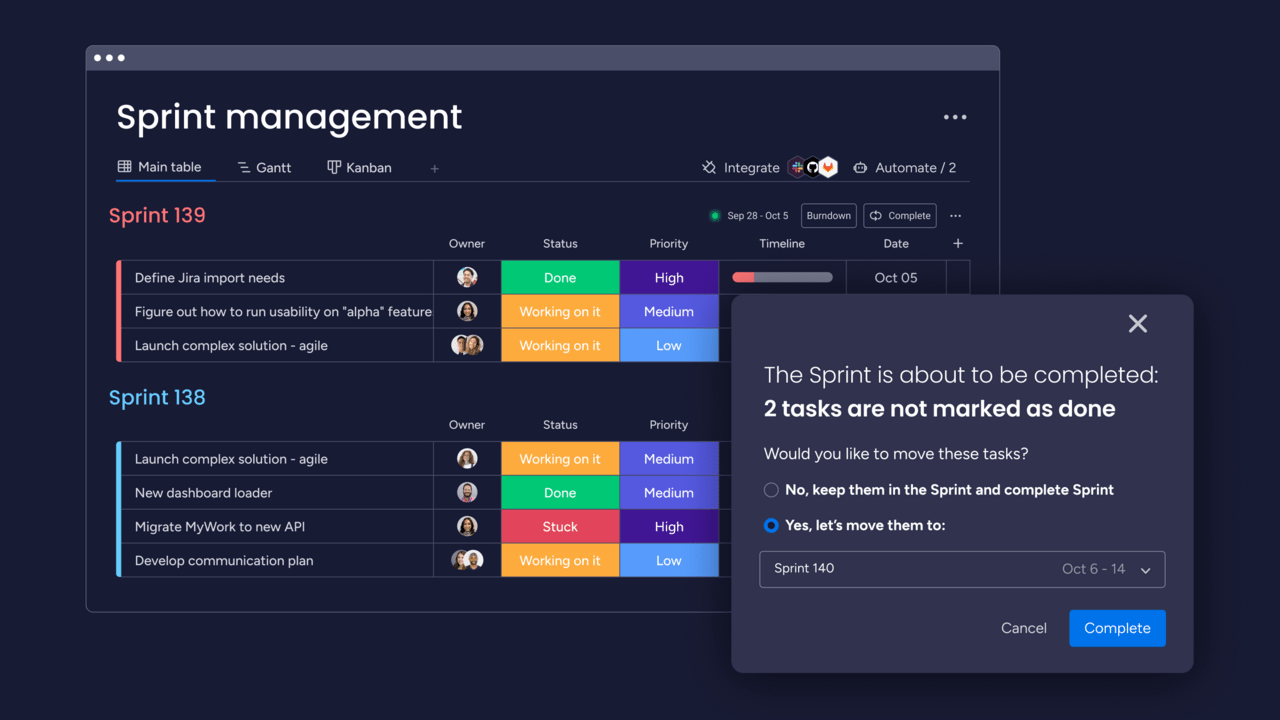
Step 6. Hold daily meetings
The daily standup meeting is a pillar of Agile practices whether your teams use Scrum or other frameworks. Focus on these three things:
- What you did yesterday
- What you’ll do today
- What roadblocks exist
For example, your R&D team might use daily Zoom standups to stay on track. By screen sharing the project board, everyone remains up to speed, which improves engagement and accountability.
Step 7. Test the iteration with your stakeholders
Following sprint completion, test your iteration with the most important stakeholders. If they accept the changes, the sprint was a success, and you can move on to new features and user stories. If not, tackle their issues in the next sprint.
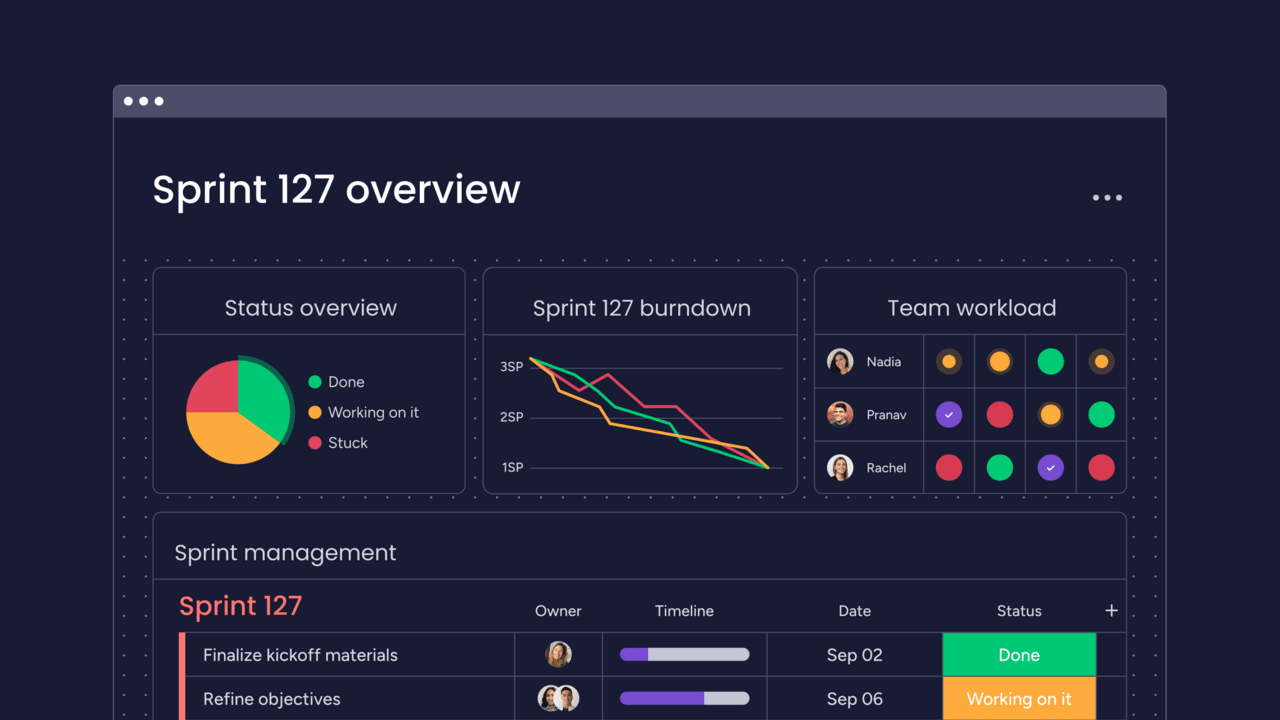
Step 8. Review your sprint and evaluate your immediate goals and backlog
After you complete a sprint, close the loop by conducting a thorough evaluation of your progress. Single out areas for improvement, and consider how the results of the sprint affect your future backlog priorities.
The Agile life cycle is made up of a lot more than one sprint—you’ll rinse and repeat the process and keep producing functional iterations of your product until you’ve delivered the final version that meets all your customers’ needs.
Manage your Agile life cycle with monday dev
Agile SDLC is far from static; it requires your team and your project to continuously adapt to your customers’ needs as you move from iteration to production. That’s why you need a central, organized workspace to house everything from your product roadmap and sprint goals to your backlog and stakeholder communications.
monday dev is the platform you’re looking for. It is a highly collaborative space packed with features that will take you from ideation to post-launch. Here are a few ways you can use it as part of your Agile software development life cycle:
Roadmap planning
Align complex software project plans in one roadmap, connecting development and client-facing teams 24/7.
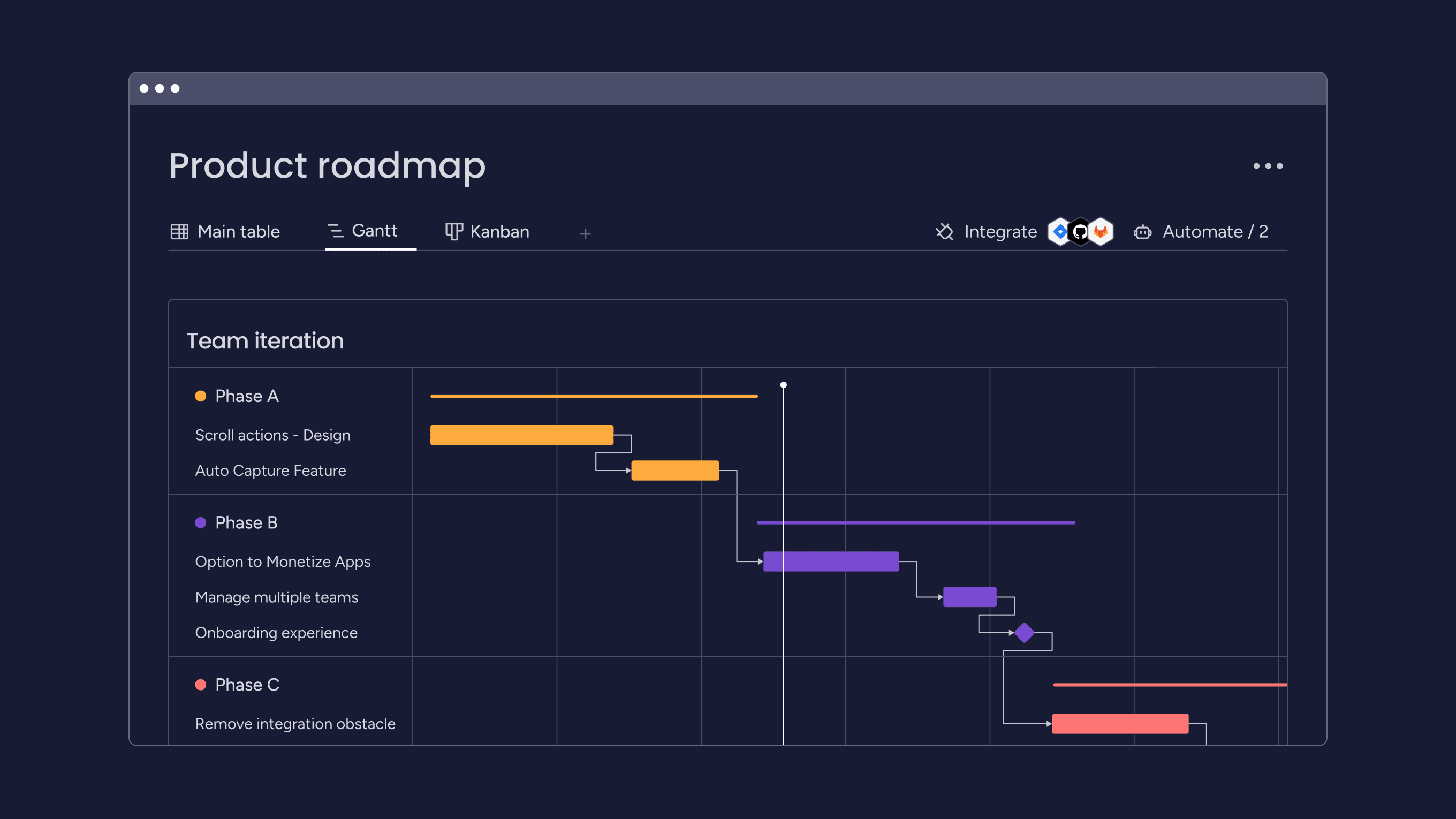
Sprint management
Keep the lifecycle of your project organized by managing sprint planning, story points, daily standups, and retro and sprint reviews within monday dev.
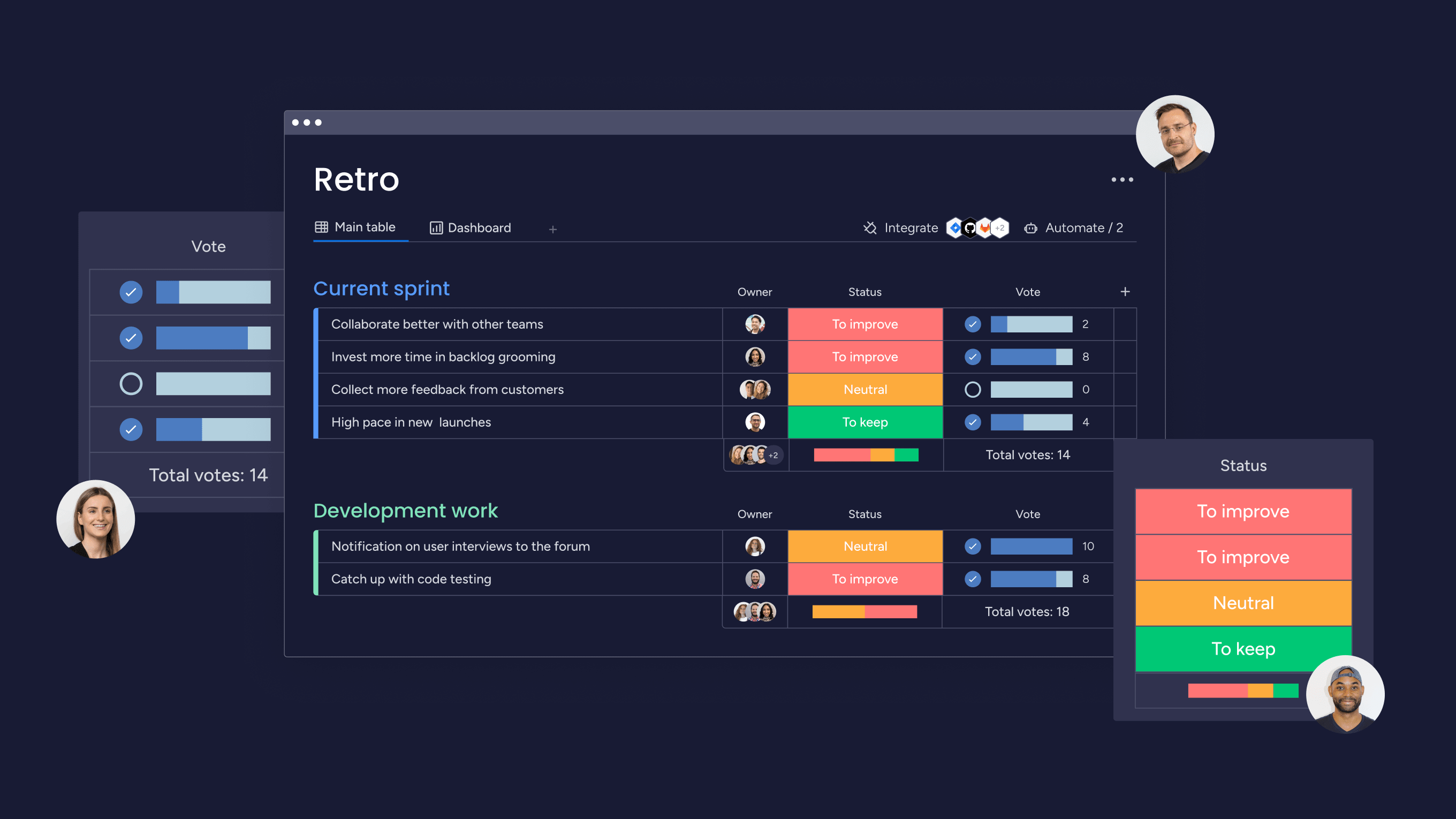
Bug tracking
Use monday dev to identify, report, and assign bugs to relevant team members for speedy escalation and resolution of the issues holding back your product.
Feature backlog
Based on your product roadmap, store a prioritized list of features you need to work on, with details such as feedback, task ownership, and deadlines to provide visibility into what’s ahead.
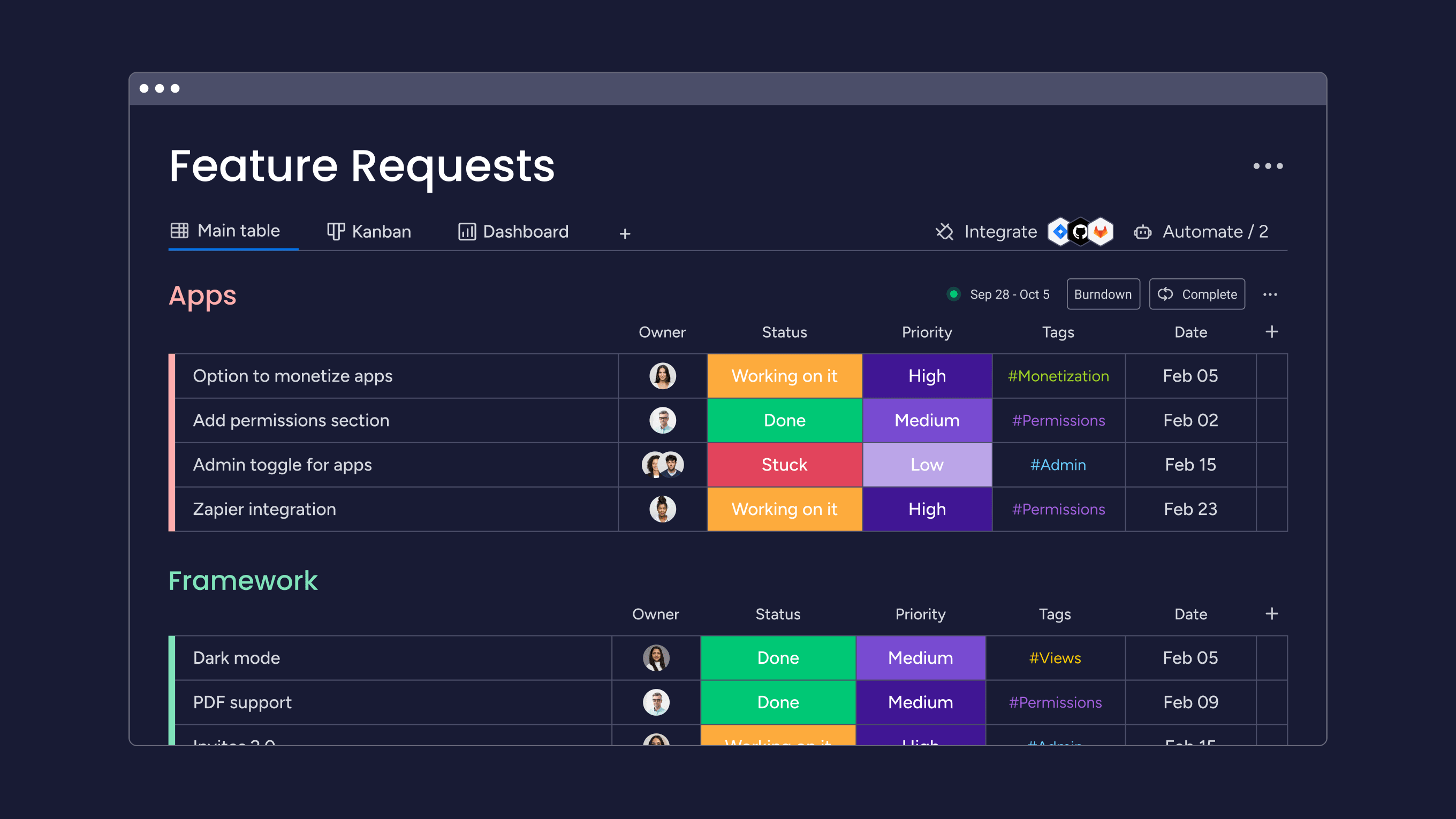
Agile communication
Keep your Agile teams in sync by providing updates on different tasks, pulling conversations in from email or tools like Slack, or adding helpful labels, due dates, and attachments.
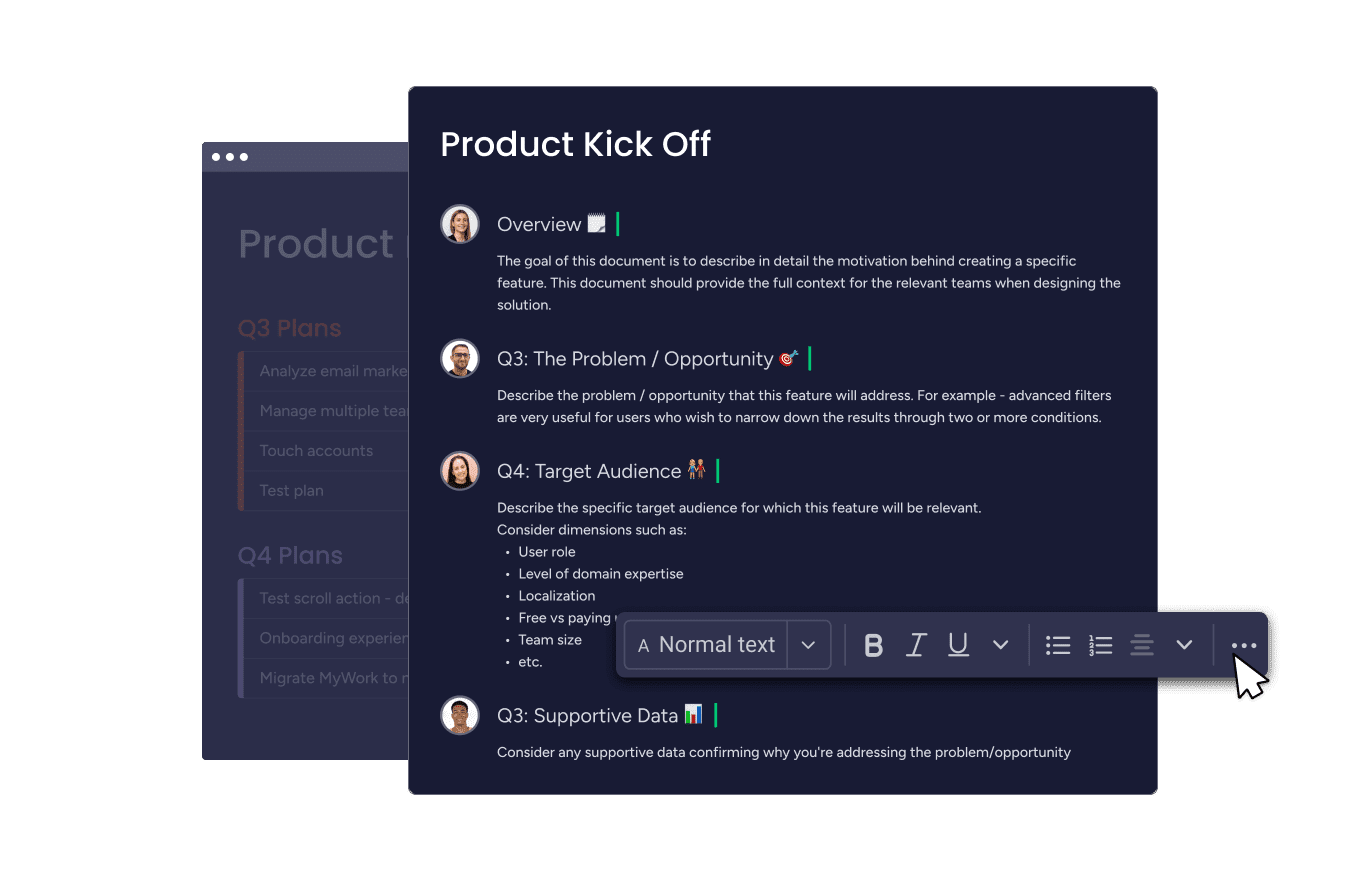
Ready to bring quality products to market at speed? Take a monday dev trial today.
Try monday devFAQs
How does the software development lifecycle work with Agile sprints?
The software development lifecycle is a process outlining the steps involved in creating and maintaining software products. It typically follows a linear, sequential approach; however, with Agile sprints, the SDLC becomes more iterative and cyclical, allowing for feedback and adjustments throughout the development process.
Is SDLC Waterfall or Agile?
Your approach to software development life cycles can follow a Waterfall, Agile, or other methodology. Whichever you choose, it's important to consider your team, project, and goals to determine the best approach for your organization.
How long should an Agile sprint last?
The length of an Agile sprint varies depending on factors such as team size, project complexity, and customer needs. Some product managers prefer shorter sprints of 1-2 weeks, while others opt for longer sprints of 3-4 weeks. Overall, you must find the sweet spot that works best for your team while allowing you to deliver quality products efficiently.
 Try monday dev
Try monday dev 
